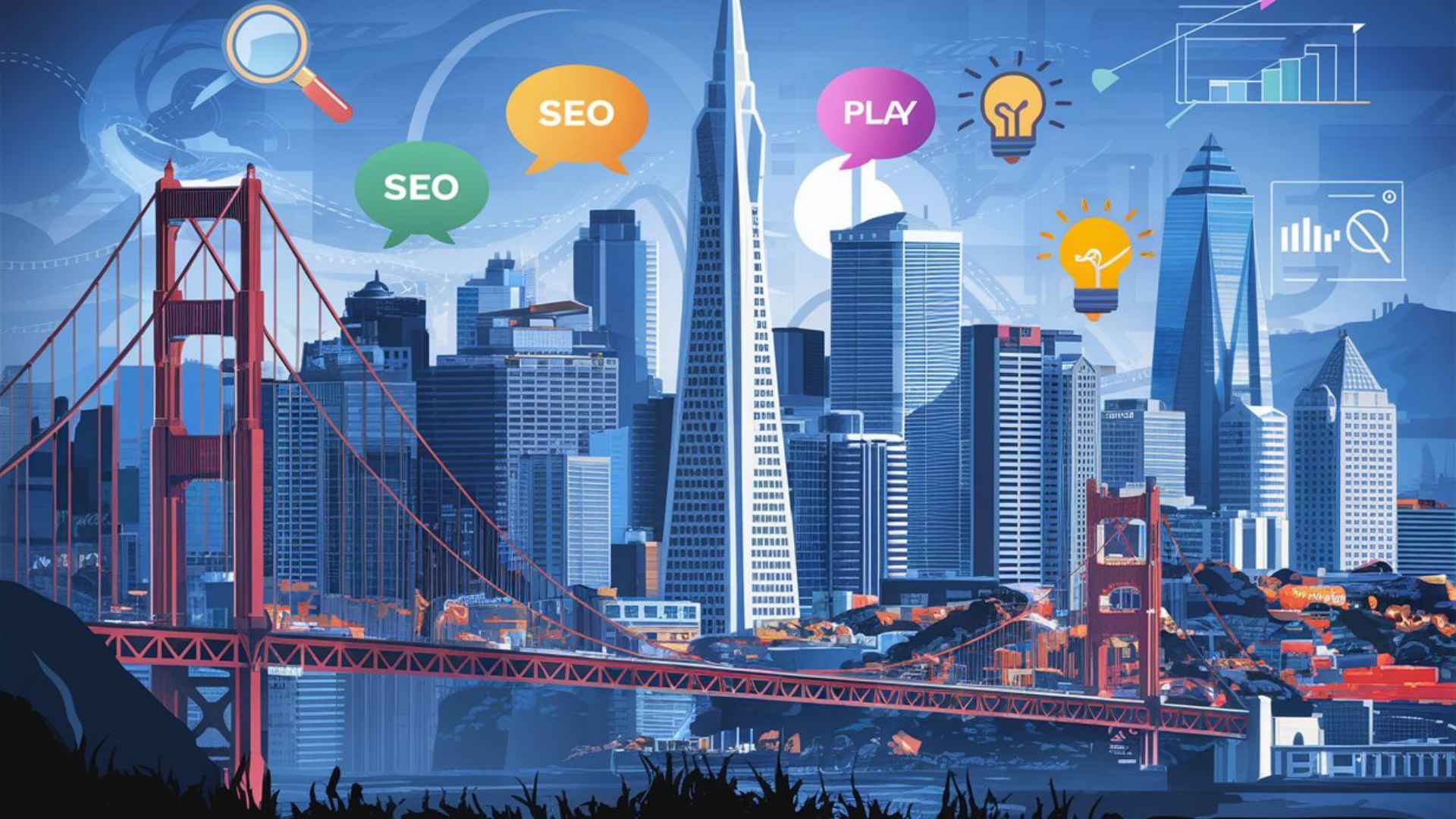5 Digital Marketing Trends Reshaping the Bay Area Tech Scene
The Bay Area, home to Silicon Valley and a hotbed of technological innovation, is always at the forefront of digital marketing trends. As someone who’s been in the trenches of this ever-evolving landscape for over two decades, I’ve seen firsthand how quickly things can change.
Today, we’re diving into five game-changing trends that are reshaping the digital marketing scene in the Bay Area.
Buckle up, folks – it’s going to be an exciting ride!
| Aspect | Key Characteristics |
| Audience | Tech-savvy, early adopters |
| Industry Focus | Tech, startups, innovation |
| Key Platforms | Social media, mobile, emerging tech |
| Content Preference | Authentic, value-driven, innovative |
| Challenges | High competition, rapid changes |
Table 1: Bay Area Digital Marketing Landscape at a Glance

1. Data-Driven Marketing: The New Gold Rush
Remember the Gold Rush of 1849 that put San Francisco on the map? Well, we’re in the middle of a new gold rush, and this time, data is the precious resource everyone’s after.
In the Bay Area, we’re not just dipping our toes in the data pool – we’re doing cannonballs. Digital marketing agencies here are going all-in on data-driven decision-making. It’s like we’ve traded in our pickaxes for algorithms, mining for insights instead of gold nuggets.
Here’s the deal: we’re using advanced data analytics to dig deep into consumer behavior. It’s not just about knowing what your customers bought last week. We’re talking about understanding their entire online journey, from the first click to the final purchase, and everything in between.
Why does this matter? Because it allows us to create marketing campaigns that are more targeted than a heat-seeking missile. We’re not just throwing spaghetti at the wall and seeing what sticks anymore. Every ad, every email, every social media post is carefully crafted based on hard data.
The result? Better ROI for businesses. It’s like having a secret map that leads straight to your customer’s wallet. But don’t worry, we’re not being creepy about it. We’re just using the information they’re willingly sharing to give them a better experience.
So, if you’re not leveraging data in your marketing strategy, you’re basically panning for gold in a river that’s already been picked clean. It’s time to upgrade your tools and join the data gold rush!
2. AI and Machine Learning: The Rise of the Machines (But in a Good Way!)
Alright, before you start having Terminator-style nightmares, let me clarify. When we talk about AI and Machine Learning in digital marketing, we’re not talking about robots taking over the world. We’re talking about smart tools that make our jobs easier and our marketing more effective.
In the Bay Area, AI and ML aren’t just buzzwords we throw around to sound smart at networking events. We’re actually using these technologies to revolutionize the way we do marketing. It’s like having a super-smart intern who never sleeps, never takes coffee breaks, and can process data faster than you can say “algorithm.”
Here’s how it’s playing out:
- Automation: Remember those tedious, repetitive tasks that used to eat up half your workday? AI is taking those off your plate. From scheduling social media posts to sending out personalized email campaigns, AI is handling the grunt work so you can focus on the big-picture strategy.
- Personalization: Gone are the days of one-size-fits-all marketing. With AI, we’re creating experiences that are tailored to each individual user. It’s like having a personal shopper for every single one of your customers.
- Ad Optimization: AI is getting scarily good at predicting which ads will perform best with which audiences. It’s constantly learning and adjusting, ensuring your ad spend is always optimized for maximum return.
- Chatbots and Virtual Assistants: These AI-powered helpers are becoming increasingly sophisticated. They’re not just answering basic questions anymore – they’re handling complex customer service issues, making product recommendations, and even closing sales.
- Predictive Analytics: AI is like a crystal ball for your marketing team. It can analyze past data to predict future trends, helping you stay ahead of the curve and make proactive decisions.
The best part? This is just the beginning. As AI and ML continue to evolve, they’re going to open up possibilities we haven’t even dreamed of yet. So, while we’re not quite at the stage of AI writing all our marketing copy (though ChatGPT and Claude are certainly trying), we are leveraging these technologies to create smarter, more effective marketing strategies.
If you’re not at least exploring how AI and ML can boost your marketing efforts, you’re already falling behind. It’s time to embrace our new robot overlords – er, I mean, our new AI marketing assistants!

3. Video Marketing: Lights, Camera, Conversion!
If a picture is worth a thousand words, then a video must be worth a million, right? Well, in the Bay Area, we’re banking on it. Video marketing isn’t just a trend here – it’s become the main attraction.
Think about it. When was the last time you scrolled through your social media feed without seeing a video? Probably somewhere between “never” and “I can’t remember.” That’s because video content is the undisputed champion when it comes to capturing and keeping attention in our fast-paced, scroll-happy world.
But here in the Bay Area, we’re not just jumping on the video bandwagon – we’re driving it. Here’s how:
- Short-form Videos: Thanks to platforms like TikTok and Instagram Reels, short-form videos are having a moment. And by “moment,” I mean “complete domination of the digital landscape.” These bite-sized content pieces are perfect for our shrinking attention spans and busy lifestyles.
- Live Streaming: Nothing beats the authenticity and immediacy of live video. Whether it’s a product launch, a behind-the-scenes look, or a Q&A session, live streaming is helping brands connect with their audience in real-time.
- Interactive Videos: We’re not just creating videos for people to watch passively. We’re making videos that people can interact with. Think choose-your-own-adventure style content or shoppable videos where viewers can click on products to learn more or make a purchase.
- 360-degree and VR Videos: With the rise of VR technology, we’re seeing more brands experiment with immersive video experiences. It’s not just watching a video – it’s stepping into it.
- User-Generated Content: We’re tapping into the power of our customers by encouraging them to create and share videos about our products or services. It’s authentic, it’s engaging, and it’s incredibly effective.
| Video Format | Engagement Level | Best For | Platform Examples |
| Short-form | Very High | Brand awareness, trends | TikTok, Instagram Reels |
| Live Streaming | High | Real-time interaction, events | Facebook Live, YouTube Live |
| Interactive | High | User engagement, education | YouTube, custom websites |
| 360-degree/VR | Medium-High | Immersive experiences | YouTube 360, Oculus |
| User-Generated | High | Authenticity, community building | Instagram, TikTok |
Table 2: Video Marketing Formats and Their Impact
The beauty of video marketing is its versatility. Whether you’re B2B or B2C, selling software or sandwiches, there’s a video strategy that can work for you. And with the rise of affordable, user-friendly video creation tools, you don’t need a Hollywood budget to get started.
We’re seeing businesses of all sizes leverage video marketing to boost engagement, increase conversions, and build stronger connections with their audience. So, if you haven’t yet yelled “action” on your video marketing strategy, now’s the time.
The spotlight is waiting!
4. Social Media Advertising: New Platforms, New Possibilities
Remember when social media marketing meant posting a few updates on Facebook and calling it a day? Those simpler times are long gone, my friends. In the Bay Area, we’re riding the wave of a social media revolution, and it’s changing the face of digital advertising as we know it.
The big players – Facebook, Instagram, Twitter, LinkedIn – they’re still important. But they’re no longer the only games in town. Here’s what’s shaking up the social media advertising scene in the Bay Area:
- TikTok Takeover: This platform has exploded onto the scene, and Bay Area marketers are all over it. With its algorithm-driven content discovery and highly engaged user base, TikTok offers unique opportunities for brands to reach new audiences.
- The Rise of Reddit: Often overlooked in the past, Reddit is gaining traction as an advertising platform. Its passionate communities and in-depth discussions make it perfect for certain types of campaigns, especially in the tech and gaming sectors.
- LinkedIn’s B2B Boost: While not new, LinkedIn has upped its game in recent years. For B2B companies in the Bay Area’s tech scene, it’s become an invaluable platform for targeted advertising and thought leadership.
- Pinterest’s Visual Appeal: With its focus on visual discovery, Pinterest is carving out a niche in certain industries. It’s particularly effective for brands in fashion, home decor, and food – all thriving sectors in the Bay Area.
- Snapchat’s Gen Z Connection: Don’t count Snapchat out! It remains a key platform for reaching younger demographics, and its augmented reality features offer exciting possibilities for creative campaigns.
But it’s not just about which platforms we’re using – it’s about how we’re using them. We’re seeing a shift towards more authentic, value-driven content on social media. Gone are the days of in-your-face advertising. Today, it’s all about creating content that educates, entertains, or solves problems for your audience.
We’re also leveraging the unique features of each platform. Stories, Reels, IGTV, Twitter Spaces – each of these tools offers new ways to connect with your audience and tell your brand’s story.
And let’s not forget about influencer partnerships. In the Bay Area, we’re seeing a rise in micro-influencer collaborations. These partnerships often result in more authentic, relatable content that resonates with niche audiences.
The key to success in this evolving landscape? Flexibility. The social media world moves fast, and what works today might be old news tomorrow. We’re always keeping our ear to the ground, ready to pivot our strategies as new platforms emerge and user behaviors change.
So, whether you’re a tech startup in Silicon Valley or a boutique coffee shop in San Francisco, there’s a social media advertising strategy out there that can work for you. The trick is finding the right mix of platforms and content types that resonate with your unique audience. And in the Bay Area, that’s exactly what we’re doing – one tweet (or X), TikTok, and targeted ad at a time.

5. Content Marketing: Keeping It Real in a World of Fake News
In an era where “fake news” is part of our daily vocabulary, authenticity has become the holy grail of marketing. And nowhere is this more apparent than in the world of content marketing, especially here in the Bay Area.
Content marketing isn’t new, but the way we’re approaching it is evolving. It’s no longer enough to just churn out blog posts or whitepapers filled with keywords. Today’s savvy Bay Area consumers are looking for content that’s not just informative, but also genuine, engaging, and valuable. Here’s how we’re rising to meet that challenge:
- Storytelling with Substance: We’re moving beyond dry, corporate communications and embracing the art of storytelling. Whether it’s sharing the journey of a startup founder or showcasing the real-world impact of a product, stories help create emotional connections with audiences.
- User-Generated Content: Nothing says authenticity like content created by real users. We’re encouraging customers to share their experiences, reviews, and even creative uses of products. It’s like word-of-mouth marketing for the digital age.
- Thought Leadership: In the tech-savvy Bay Area, establishing yourself as a thought leader can set you apart from the competition. We’re seeing more companies invest in creating in-depth, insightful content that showcases their expertise and adds real value to industry discussions.
- Interactive Content: Quizzes, polls, calculators, and interactive infographics are becoming increasingly popular. They not only engage users but also provide valuable data insights.
- Podcasts and Video Series: Long-form content is making a comeback, but in audio and video formats. Many Bay Area companies are launching their own podcasts or YouTube series, providing a platform for deeper dives into topics their audience cares about.
- Transparency and Behind-the-Scenes Content: Pulling back the curtain and showing the human side of your business can go a long way in building trust. Whether it’s a day-in-the-life video of an employee or a candid post about challenges faced, transparency is key.
- Educational Content: In the spirit of providing value, we’re seeing a rise in educational content. Tutorials, how-to guides, and explainer videos are not just helpful for users – they also position your brand as a helpful resource.
- Localized Content: Despite our global reach, there’s a growing appreciation for content that speaks to local experiences. Bay Area companies are creating content that resonates with the unique culture and lifestyle of the region.
The golden rule of content marketing in the Bay Area? Quality over quantity, always. It’s better to publish one amazing piece of content a month that really resonates with your audience than to flood their feeds with mediocre posts.
| Business Type | Recommended Content Types | Key Objectives | Metrics to Track |
| B2B Tech | Whitepapers, case studies, webinars | Thought leadership, lead generation | Downloads, webinar attendees |
| B2C Startup | Social media posts, user-generated content | Brand awareness, community building | Engagement rate, shares |
| Enterprise | In-depth reports, video series | Industry authority, client education | Time on page, lead quality |
| Local Business | Location-based content, customer stories | Local SEO, trust building | Local search rankings, reviews |
Table 3: Content Marketing Strategies for Different Business Types
And let’s not forget about distribution. Creating great content is only half the battle – you also need to get it in front of the right eyes. That’s why we’re seeing more integrated approaches, where content marketing works hand-in-hand with SEO, social media, and email marketing strategies.
In the end, successful content marketing in the Bay Area is about building relationships, not just driving transactions. It’s about creating content so good that people actively seek it out, rather than trying to interrupt their day with sales pitches.
So, whether you’re a tech giant or a small local business, there’s room for you in the content marketing game. The key is to stay true to your brand, provide real value to your audience, and never underestimate the power of a good story. In a world of clickbait and fake news, authenticity isn’t just appreciated – it’s required.
Key Takeaways
- Data-Driven Marketing: Leverage advanced analytics to gain deep insights into consumer behavior and refine your strategies for better ROI.
- AI and Machine Learning: Embrace these technologies for automation, personalization, ad optimization, and predictive analytics to stay ahead of the curve.
- Video Marketing: Incorporate diverse video formats like short-form videos, live streaming, and interactive content to capture and retain audience attention.
- Social Media Advertising: Explore new platforms like TikTok and Reddit, while also optimizing strategies on established networks. Focus on creating authentic, value-driven content.
- Content Marketing: Prioritize authenticity and value in your content. Use storytelling, user-generated content, and thought leadership to build genuine connections with your audience.
Frequently Asked Questions About Digital Marketing Trends in the Bay Area
Q: How can small businesses in the Bay Area compete with larger companies in digital marketing?
A: Small businesses can leverage their agility and local connections. Focus on niche markets, create highly targeted campaigns, and use your authentic voice to stand out. Utilize cost-effective strategies like content marketing and social media to build a strong online presence.
Q: Is it necessary to be on every social media platform?
A: Not at all. It’s more important to choose platforms where your target audience is most active and where you can consistently provide value. Quality engagement on a few platforms is better than a weak presence across many.
Q: How can B2B companies in the tech sector leverage these trends?
A: B2B companies can use data-driven marketing for lead scoring and personalized outreach. LinkedIn is particularly effective for B2B social media advertising. Create thought leadership content to establish authority in your niche, and use video marketing to explain complex products or services.
Q: How often should we update our digital marketing strategy?
A: It’s crucial to regularly review and adjust your strategy. Conduct quarterly reviews of your overall strategy, but be prepared to make smaller adjustments more frequently based on campaign performance and emerging trends.
Q: How can we measure the success of our digital marketing efforts?
A: Key metrics include website traffic, conversion rates, engagement rates on social media, email open and click-through rates, and ultimately, ROI. Use analytics tools to track these metrics and tie them back to your business goals. Remember, the specific metrics that matter most will depend on your individual business objectives.
Elevate Your Marketing Game: Top Tools We Trust
As you dive deeper into the world of digital marketing, it’s crucial to have the right tools at your disposal. Here are five high-quality offerings that can supercharge your digital marketing efforts:
1. Cloudways: Cloud Hosting for Optimal Performance
In the fast-paced Bay Area tech scene, website speed and reliability are non-negotiable. Cloudways offers top-tier cloud hosting solutions that ensure your website loads quickly and stays up, even during traffic spikes. Their platform is perfect for businesses looking for scalable, high-performance hosting without the headache of server management.
2. SE Ranking: Comprehensive SEO Platform for Growing Businesses
In this competitive digital landscape, having a robust SEO strategy is crucial. SE Ranking offers a comprehensive suite of SEO tools that cater to businesses of all sizes, from scrappy startups to established tech giants.
With features like keyword research, competitor analysis, backlink monitoring, and website audits, SE Ranking provides the insights you need to boost your organic search performance. What sets SE Ranking apart is its user-friendly interface and affordable pricing, making advanced SEO capabilities accessible to businesses at every stage of growth.
For Bay Area companies looking to increase their visibility in a crowded market, SE Ranking’s white-label reports and API access are particularly valuable, allowing for seamless integration with other marketing tools and client presentations. Whether you’re a solo entrepreneur in San Francisco or a marketing team in Silicon Valley, SE Ranking offers the tools to help you climb the search engine rankings and stand out in the tech-savvy Bay Area market.
3. Hootsuite: Streamline Your Social Media Management
With social media playing a crucial role in digital marketing, efficient management is key. Hootsuite allows you to manage multiple social media accounts from one dashboard, schedule posts, and analyze your performance. It’s perfect for Bay Area businesses looking to maintain a strong, consistent social media presence across multiple platforms.
4. Google Analytics 360: Enterprise-level Analytics for Data-Driven Decisions
For larger businesses or those dealing with massive amounts of data, Google Analytics 360 offers advanced analytics capabilities. It provides deeper insights, more customization options, and integrates seamlessly with other Google marketing products. This tool is ideal for Bay Area tech companies that need to process and analyze large volumes of user data.
Learn about Google Analytics 360
5. HubSpot: All-in-One Inbound Marketing, Sales, and Service Platform
In our ecosystem, efficiency and integration are key. HubSpot offers a comprehensive suite of tools that bring your marketing, sales, and customer service efforts together in one powerful platform. From creating dynamic content and managing social media to nurturing leads and analyzing your performance, HubSpot provides the tools you need to attract, engage, and delight customers.
What sets HubSpot apart is its focus on inbound marketing methodology, which aligns perfectly with the trend towards authentic, value-driven content we’re seeing in the Bay Area. The platform’s CRM is free to start with, making it an excellent option for startups and growing businesses looking to scale their marketing efforts efficiently.
For tech companies in Silicon Valley and beyond, HubSpot’s robust API and extensive integration capabilities make it a versatile choice that can grow and adapt with your business. Whether you’re a SaaS startup or an established enterprise, HubSpot’s tools can help you streamline your operations and drive growth in the competitive Bay Area market.
Explore HubSpot’s capabilities
Remember, while these tools can significantly enhance your digital marketing efforts, they’re most effective when used as part of a comprehensive, well-planned strategy. Always consider your specific business needs and goals when choosing marketing tools.
Further Reading
Want to dive deeper into the world of digital marketing? Check out these articles for more insights and strategies:
- The Surprising Benefits of Diversifying Your Social Media Presence (Hint: TikTok Ban?)
- AI and the Future of Work: Embracing Change
- How Website Speed Impacts Your Sales
- How to Add Social Media to Google Business Profile: A Fail-Proof Plan to Elevate Your Brand Awareness
- One Year of ChatGPT: How It Changed the World
These articles will provide you with additional context and strategies to complement the trends we’ve discussed in this piece.
Final Thoughts
As we’ve explored these five digital marketing trends reshaping the Bay Area tech scene, it’s clear that the landscape is evolving at a breakneck pace. From data-driven strategies to AI integration, video dominance to social media innovation, and the renewed focus on authentic content – the Bay Area continues to be at the forefront of digital marketing innovation.
But we’re curious: what are you seeing on the ground? Have you noticed these trends playing out in your own digital marketing efforts? Or, perhaps you’ve observed other emerging trends that we haven’t covered here? We’d love to hear your thoughts and experiences. Drop a comment below and let’s keep this conversation going. Your insights could be invaluable to others navigating this dynamic landscape.
And remember, staying ahead in the fast-paced world of digital marketing can be challenging, especially when you’re also focused on running and growing your business. If you’re feeling overwhelmed or simply want to ensure you’re leveraging these trends to their fullest potential, we’re here to help.
At Web Leveling, we specialize in crafting tailored digital marketing strategies that align with the latest trends and best practices. Whether you’re a tech startup looking to make your mark or an established company aiming to stay ahead of the curve, our team of experts can help you navigate the complex digital marketing landscape of the Bay Area and beyond.
Interested in learning how we can boost your digital marketing efforts? Don’t hesitate to reach out. Contact us today, and let’s discuss how we can help you level up your digital presence and achieve your business goals.
Happy reading, and here’s to your digital marketing success in the Bay Area and beyond!

Cal Hewitt is the Founder, CEO, and Project Lead at Web Leveling, a digital marketing agency empowering small and mid-sized businesses to thrive online. With over 27 years of experience in business analysis, management, consulting, and digital marketing, Cal brings a unique perspective to every project. He specializes in website design and development, AI consulting, social media marketing, and online reputation management. Cal’s hands-on leadership style and commitment to innovation ensure that Web Leveling stays at the forefront of digital marketing trends, delivering transformative results for clients.








